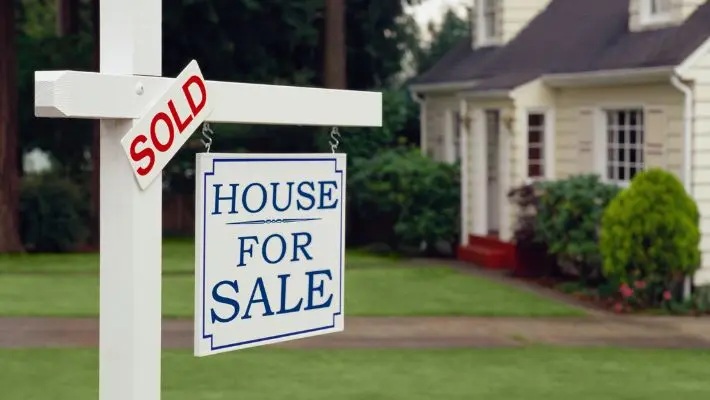
Understanding Preforeclosure: What It Means for Buyers and Sellers
Preforeclosure is an important phase in the mortgage process that occurs before a home officially enters foreclosure.
This stage begins when a homeowner falls behind on their mortgage payments—usually by 90 days or more—and the lender issues a notice of default. This notice is a formal warning that the homeowner is at risk of losing the property if the overdue payments aren't made. Preforeclosure gives homeowners time to fix the problem by catching up on their payments, refinancing their mortgage, or selling the property to avoid foreclosure.
This period can be stressful for homeowners, but it also presents opportunities for buyers. Buyers may find homes for sale during preforeclosure, often at a price lower than market value. Understanding how preforeclosure works is important for both buyers and sellers, as it can impact their financial future and decisions.
How Does Foreclosure Work?

Foreclosure is the legal process that allows a lender to take back a property when a homeowner stops making mortgage payments. Essentially, when someone buys a house with a mortgage, the house itself becomes the collateral for the loan. If the homeowner can't pay back the loan, the lender has the right to take the house and sell it to recover the money that was borrowed.
The foreclosure process usually starts when the homeowner falls behind on payments, and the lender files a public notice, often called a Notice of Default or a "lis pendens," depending on the state. Once this notice is filed, the homeowner enters the preforeclosure phase, during which they have a limited time to either pay off the debt or work out a solution with the lender.
If the homeowner can’t catch up on the overdue payments during this time, the house may go to a foreclosure auction, where it is sold to the highest bidder. If no one buys the house at the auction, the property becomes "real estate-owned" (REO), meaning the bank or lender now owns the home.
Foreclosure laws vary from state to state, which means the length and complexity of the process can differ depending on where the property is located. Some states have judicial foreclosures, which involve court proceedings and take longer, while others allow for nonjudicial foreclosures, which can happen more quickly. Despite these differences, the goal in both cases is the same: the lender is trying to recover the money they are owed by selling the property.
Preforeclosure Opportunities and Challenges for Buyers
For buyers, the preforeclosure phase can be a unique opportunity to purchase a property at a discount. Properties in preforeclosure are often sold below market value because the homeowners are trying to avoid foreclosure, and they may be willing to sell the property quickly for less than they owe on the mortgage.
One way buyers can purchase a preforeclosure property is through a short sale. A short sale occurs when the property is sold for less than the amount owed on the mortgage, but the lender agrees to accept the lower amount as payment. While this can be a great deal for buyers, the process is often complicated and can take longer than a traditional home purchase because the lender has to approve the sale.
Another challenge for buyers is that preforeclosure properties are sometimes sold "as-is." This means that the buyer might need to invest additional money in repairs or upgrades. Additionally, if the homeowner is still living in the property, they may be going through a difficult time, which can make negotiations more sensitive.
Real estate investors often look for preforeclosure properties because they can get a good deal and either resell the property for a profit or rent it out. However, buyers should work with experienced real estate agents who understand how to navigate preforeclosure transactions. These agents can guide them through the process, including estimating how long it might take to complete the purchase and what steps to take.
Decisions Facing Sellers in Preforeclosure
Homeowners in preforeclosure face difficult decisions. They may be under significant financial stress and unsure about their options. However, even during this challenging time, homeowners still have some control over the situation and can take steps to avoid foreclosure.
One option is to sell the property before it goes into foreclosure. Selling the home on the open market or through a short sale can help the homeowner avoid foreclosure and the damage it can do to their credit score. Foreclosure can have long-lasting effects on a person's financial health, making it harder to get loans, rent apartments, or even find a job in the future. A short sale is generally considered less damaging to a homeowner's credit than a full foreclosure.
In some cases, homeowners may also be able to work out a deal with the lender. Lenders don't always want to go through the foreclosure process because it can be expensive and time-consuming. As a result, they might be willing to consider loan modifications, refinancing options, or even a payment plan to help the homeowner catch up on missed payments. The key is for the homeowner to act quickly and communicate with the lender before the situation worsens.
Legal and Financial Considerations
When a homeowner is in preforeclosure, there are several legal and financial factors to keep in mind. One important legal right is the right to reinstate the mortgage. This means that if the homeowner can come up with the money to pay off the overdue amount by a certain deadline, they can stop the foreclosure process and keep their home.
In some states, homeowners also have a "right of redemption." This gives them the opportunity to reclaim their property even after a foreclosure sale by paying the entire past-due amount plus any additional fees. However, the timeline for exercising this right varies by state and is often limited.

The legal process of foreclosure is different from state to state. Some states require judicial foreclosures, which means the lender must go through the court system to get approval for the foreclosure. This type of foreclosure tends to take longer, giving the homeowner more time to catch up on payments. Other states allow for nonjudicial foreclosures, which can happen more quickly because they don’t involve court proceedings, although specific notices and steps are still required to protect the homeowner's rights.
Impact on Homeowners and Communities
The effects of preforeclosure and foreclosure reach beyond the homeowner. When homes go into foreclosure, it can negatively impact the surrounding community as well. Foreclosed properties are often left vacant, which can lead to a decline in neighborhood property values. In some cases, abandoned homes can also attract crime or neglect, further affecting the community's overall well-being.
On the other hand, buyers who purchase preforeclosure properties and invest in fixing them up can help stabilize and improve neighborhoods. Restoring and maintaining homes that are at risk of falling into disrepair can benefit the entire community by keeping property values steady and encouraging other homeowners to take care of their properties.
Strategies to Avoid Foreclosure
Homeowners who find themselves in preforeclosure can take several steps to avoid losing their homes. One strategy is to reinstate the loan by paying off the overdue amount. Another option is to work with the lender to modify the loan, either by lowering the interest rate, extending the repayment period, or reducing the principal balance.
In some cases, a short refinance may be possible. This is when the lender agrees to refinance the loan for a lower amount, allowing the homeowner to keep the property while reducing their monthly payments. Special forbearance agreements can also provide temporary relief by reducing or suspending payments for a short period, giving the homeowner time to get back on track financially.
The most important step homeowners can take is to reach out to their lender as soon as they start having trouble making payments. Lenders are often willing to work with homeowners who show they are trying to resolve the issue, but they need to know there is a problem before they can help.
In addition, homeowners can seek guidance from resources like the Consumer Financial Protection Bureau (CFPB) or the U.S. Department of Housing and Urban Development (HUD). These organizations provide valuable information and may offer assistance programs for those facing preforeclosure.
Making Informed Decisions During Preforeclosure

Preforeclosure is a challenging time for homeowners, but it also offers opportunities for both sellers and buyers to make informed, strategic decisions. By understanding the process, the legal rights involved, and the options available, homeowners can take action to avoid foreclosure and protect their financial future. At the same time, buyers can take advantage of the potential to purchase a property at a lower price, though they need to be aware of the challenges involved.
The key to navigating preforeclosure successfully is understanding real estate terms and communication. Whether you're a homeowner struggling to make payments or a buyer looking for a good deal, understanding preforeclosure will help you make better decisions that align with your long-term goals.




